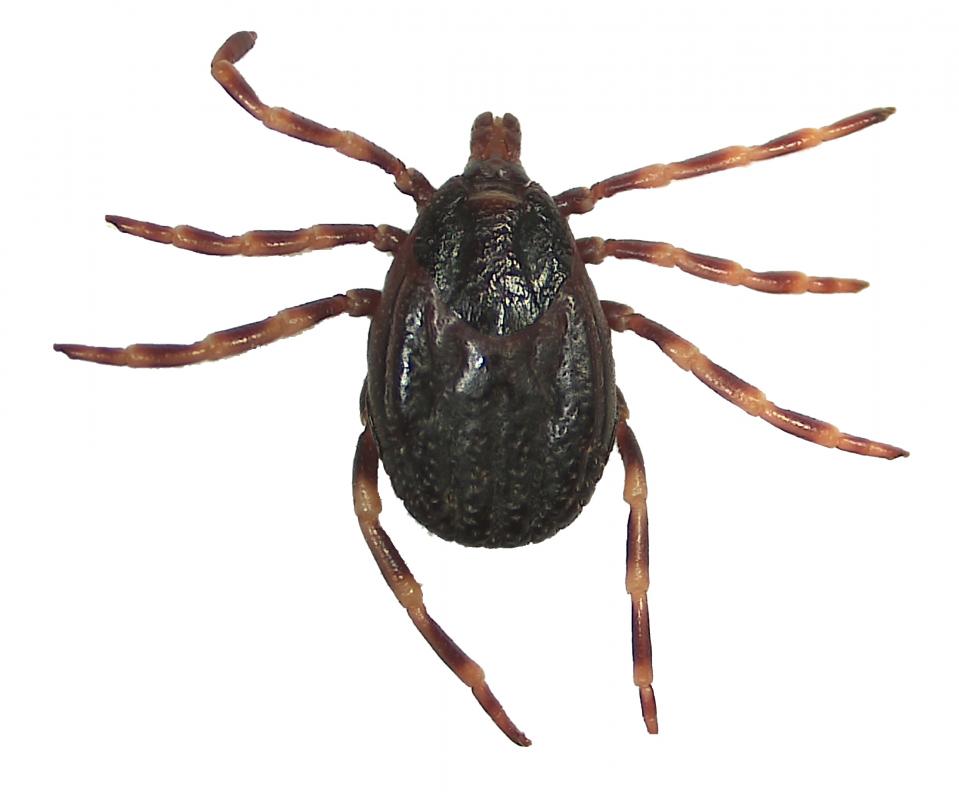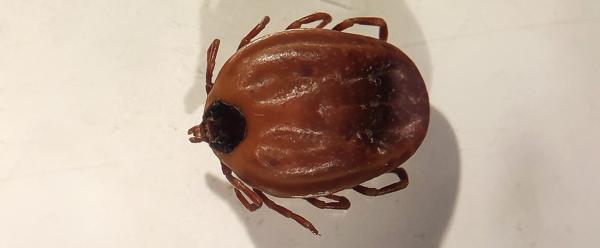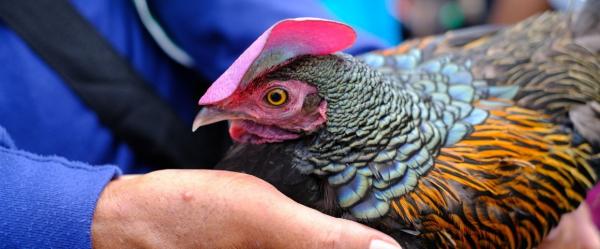Science at work 9 April 2024
- Home
- Press area
- Press releases
- bont-legged tick
The bont-legged tick under surveillance

The adult ticks measure up to 8 mm in length: they are slightly larger than others, “but several of the tick species found in our Mediterranean regions can nevertheless reach the same size ”, according to Laurence Vial and Frédéric Stachurski, veterinarians and researchers in parasitology at CIRAD. “It is therefore an exaggeration to call them giant ticks ”. However, “they are known as bont-legged ticks, and their striped legs make them easily recognisable ”.
Currently observed in garrigue or dry hilly areas along the Mediterranean coast in several French departments (Pyrénées-Orientales, Aude, Hérault, Gard, Bouches-du-Rhône, Var, and in southern Ardèche), this tick seems to have been progressing for the last five years in these Mediterranean regions to which it is suited. “We are studying its installation, its ecological niche, and its tolerance to different temperatures, humidity levels and rainfall regimes, to understand the factors that explain its expansion ”, say the researchers. “For this reason, we are interested in any reports by farmers or individuals recognising this tick”.
These ticks attach to certain animals, and accidentally to humans, when they are immobile, and far more rarely when they are moving. They are found in fields or garrigue from March to August. “Unlike other tick species that wait for hosts on blades of grass, these ticks move towards the host, which they identify through vibrations in the ground or breathing ”. They can move several metres, but once attached to an animal, they can then be transported over long distances and thereby extend their distribution area.
A tick that attaches to certain animals, but is not harmful to them
Adult ticks attach to horses, cattle, sheep, goats, wild boar and deer, without doing them any harm except for small wounds if the infestation is too heavy. After engorging on the blood of their host, female ticks drop to the ground and lay eggs in the environment. From early July to late September, the larvae from the eggs attach to small mammals (especially hares and rabbits) and birds (especially blackbirds but also thrushes, robins, finches, etc.). Once engorged, the larvae moult on the host into nymphs that then engorge again, before dropping off three weeks after the larvae attached.
What dangers do Hyalomma marginatum ticks pose to humans? Hyalomma marginatum can thus transmit the Crimean-Congo haemorrhagic fever virus to people. Although positive serological results have recently been reported in cattle in Corsica, this virus has not yet been detected in mainland France. However, it is very widespread in Africa, Asia, the Middle East and Turkey, where it recently caused an epidemic. In Europe, it is present in the Crimea, Romania and the Balkans, from Greece to Albania, and it has recently appeared in Spain. What should you do if you have a tick? Report any tick bites on citique.fr (a participatory research programme in which citizens can contribute to research on ticks and the diseases they transmit), or on the associated smartphone application . |
Bibliographic references
- Stachurski Frédéric, Vial Laurence. 2018. Installation de la tique Hyalomma marginatum , vectrice du virus de la fièvre hémorragique de Crimée-Congo, en France continentale. Bulletin Epidémiologique (84) : 37-41.
- Grech-Angelini S, Lancelot R, Ferraris O, Peyrefitte CN, Vachiery N, Pédarrieu A, et al. Crimean-Congo Hemorrhagic Fever Virus Antibodies among Livestock on Corsica, France, 2014–2016. Emerg Infect Dis. 2020 May; 26(5): 1041–1044. doi: 10.3201/eid2605.191465
- Bonnet Sarah, Blisnick Adrien, Boulanger Nathalie, Stachurski Frédéric, Vial Laurence. 2018. Introduction et expansion de nouvelles espèces de tiques : Hyalomma marginatum . Le Point Vétérinaire (Éd. Expert Rural) (385) : 62-63.


























